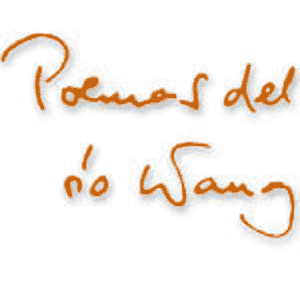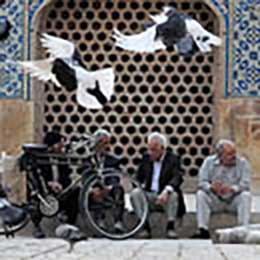
While traveling from Buenos Aires to Azul in Argentina, wherever there was a shady spot or a group of trees along the road in the infinite pampas, we have seen again and again something like a small chapel or niche that we have first considered as a sign to recall the place of a fatal accident as it is often done in other countries in memory of family members or friends.

However, when we mentioned them to Julia, it turned out that we were mistaken. These were little oratories or sanctuaries dedicated to Gauchito Gil, the bandit healing post mortem the son of the policeman murdering him. Dead for more than 130 years, his unauthorized legend has not ceased to gain adherents throughout Argentina. Every 8 of January, in scorching summer, his grave some eight kilometers from
 Mercedes in the province of Corrientes attracts more than 250 thousand devotees. And the devotion of his companion, the San La Muerte is also on the increase.
Mercedes in the province of Corrientes attracts more than 250 thousand devotees. And the devotion of his companion, the San La Muerte is also on the increase.
Gauchito Gil is one more of those popular saints not accepted by the Vatican but gaining each day more followers all over America. Moreover, in 2006 his tomb received for the first time an archbishop’s visit. You should better listen to the whole story as it is told by Nieves Concostrina in her characteristic style in the program “Polvo eres” of the Radio Nacional of Spain, dedicated to the most curious funeral cults all over the world:
Figures comparable to these Argentine ones can be found in Mexico, where the popular – and unauthorized – cult of La Santa Muerte and of Jesús Malverde, labeled as “the saints of drug dealers” is quite impressive:
The cult of Jesús Malverde and Gauchito Gil is rooted in a social background which proclaims – as one of the several songs dedicated to Gauchito formulates – that “the innocence of the people is called necessity.”
 Aby Warburg in 1895 among the Pueblo Indians
Aby Warburg in 1895 among the Pueblo IndiansThese images come to mind when reading in Aby Warburg: “laughing at the comic element in the folklore is a serious error, because in that very moment you lose the understanding of the tragic element” (Schlangenritual). Of course in the case of this newly coined folklore with its cruel iconography, laughing is the more difficult job.

The popular devotion to the bandit who was a benefactor of the poor can be easily understood. But the other figure accompanying it in the same sanctuaries, the Death with its scythe and other grotesque, emaciated and aggressive attributes can be only explained through a process of inversion. In a similar way to what Aby Warburg says about how Asclepius taught people to use the poison and image of the snake as a pharmakon, a sympathetic remedy against the sufferings and violence of humanity. This cult is also an attempt of the domestication of death with the means of iconography.


























































































Add comment